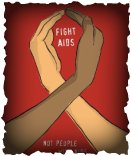
Killed 25 million people worldwide
Acquired Immune Deficiency Syndrome (AIDS) has led to the deaths of more than 25 million people since it was first recognized in 1981, making it one of the most destructive epidemics in recorded history. Despite recent improved access to antiretroviral treatment and care in many regions of the world, the AIDS epidemic claimed approximately 3.1 million (between 2.8 and 3.6 million) lives in 2005 (an average of 8,500 per day), of which 570,000 were children. UNAIDS and the WHO estimate that the total number of people living with the human immunodeficiency virus (HIV) has reached its highest level. There are an estimated 40.3 million (estimated range between 36.7 and 45.3 million) people now living with HIV. Moreover, almost 5 million people have been estimated to have been infected with HIV in 2005 alone.
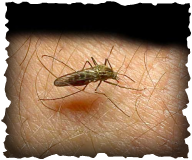
Kills about 2 million people per year
Malaria causes about 400–900 million cases of fever and approximately one to three million deaths annually — this represents at least one death every 30 seconds. The vast majority of cases occur in children under the age of 5 years; pregnant women are also especially vulnerable. Despite efforts to reduce transmission and increase treatment, there has been little change in which areas are at risk of this disease since 1992. Indeed, if the prevalence of malaria stays on its present upwards course, the death rate could double in the next twenty years. Precise statistics are unknown because many cases occur in rural areas where people do not have access to hospitals or the means to afford health care. Consequently, the majority of cases are undocumented.
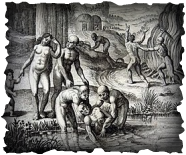
Killed 75 million people worldwide.
The Black Death, or The Black Plague, was one of the most deadly pandemics in human history. It began in South-western or Central Asia and spread to Europe by the late 1340s. The total number of deaths worldwide from the pandemic is estimated at 75 million people; there were an estimated 20 million deaths in Europe alone. The Black Death is estimated to have killed between a third and two-thirds of Europe's population.
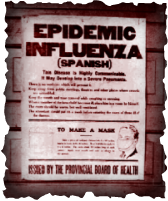
Killed 50 to 100 million people worldwide in less than 2 years.
In 1918 and 1919, the Spanish Flu pandemic killed more people than Hitler, nuclear weapons and all the terrorists of history combined. (A pandemic is an epidemic that breaks out on a global scale.) Spanish influenza was a more severe version of your typical flu, with the usual sore throat, headaches and fever. However, in many patients, the disease quickly progressed to something much worse than the sniffles. Extreme chills and fatigue were often accompanied by fluid in the lungs. One doctor treating the infected described a grim scene: "The faces wear a bluish cast; a cough brings up the blood-stained sputum. In the morning, the dead bodies are stacked about the morgue like cordwood."
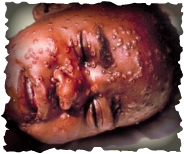
Killed more than 300 million people worldwide in the 20th century alone, and most of the native inhabitants of the Americas
Smallpox (also known by the Latin names Variola or Variola vera) is a contagious disease unique to humans. Smallpox is caused by either of two virus variants named Variola major and Variola minor. The deadlier form, V. major, has a mortality rate of 30–35%, while V. minor causes a milder form of disease called alastrim and kills ~1% of its victims. Long-term side-effects for survivors include the characteristic skin scars. Occasional side effects include blindness due to corneal ulcerations and infertility in male survivors.

A sect is a group of people who are united by some practices, opinions and religious beliefs which seperate them from other groups. Small sects and 'cults' have certain tendancies in common. They often regard wider society as corrupt and depraved. The prohibition of alcohol and tobacco is common. Sometimes, dramatic expectations about the future such as predictions of the end of the world or the dawning of a new era form the doctrines of the group. The founder is often a charismatic person who claims some special relationship with God.

Wild boar (also wild pig, Sus scrofa) is a species of the pig genus Sus, part of the biological family Suidae. The species includes many subspecies. It is the wild ancestor of the domestic pig, an animal with which it freely hybridises. Wild boar are native across much of Northern and Central Europe, the Mediterranean Region (including North Africa's Atlas Mountains) and much of Asia as far south as Indonesia. Populations have also been artificially introduced in some parts of the world, most notably the Americas and Australasia; principally for hunting. Elsewhere, populations have also become established after escapes of wild boar from captivity.

Osama bin Mohammed bin Awad bin Laden born March 10, 1957 is a member of the prominent Saudi bin Laden family and the founder of the Islamic extremist organization al-Qaeda, most widely recognized for the September 11 attacks on the United States and numerous other mass-casualty attacks against civilian and military targets. As a result of his dealings in violent, extremist jihad, Osama bin Laden lost his Saudi citizenship and was disowned by his wealthy Saudi Arabian family[citation needed]. Bin Laden is on the American Federal Bureau of Investigation's list of FBI Ten Most Wanted Fugitives due to several 1998 US embassy bombings.









 RSS Feed
RSS Feed